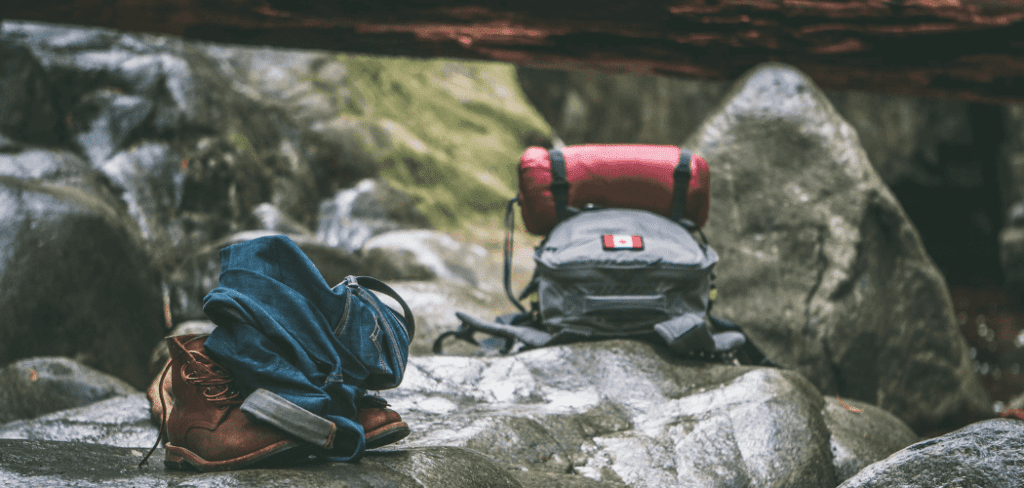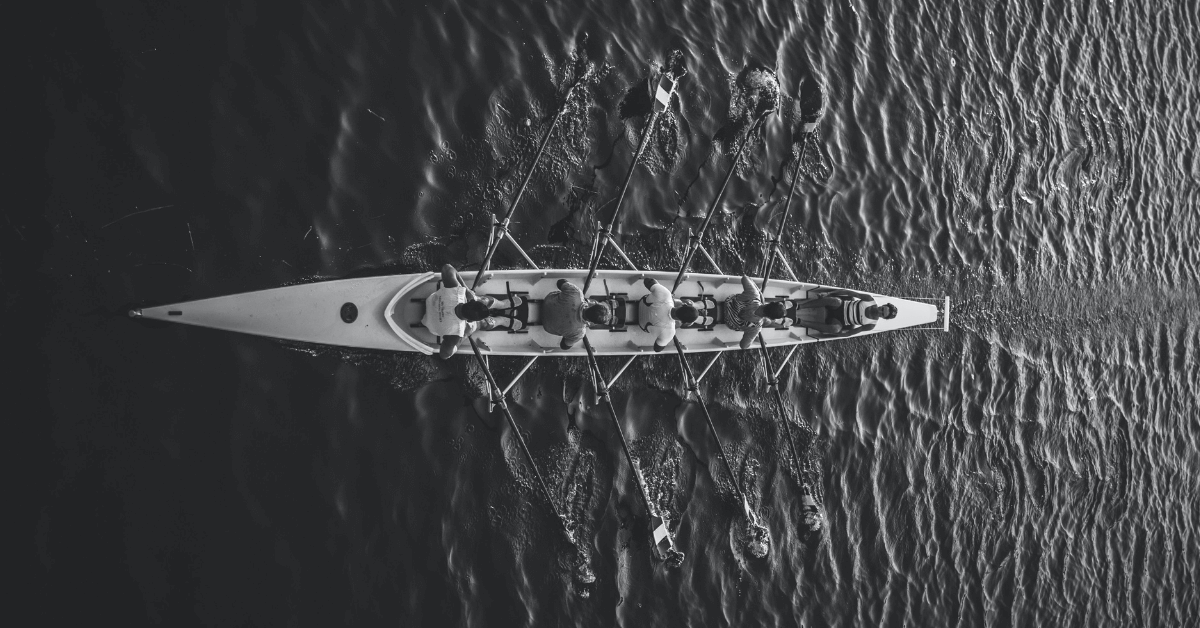When it comes to building a strong team, few things are more effective than spending time outdoors and engaging in physical activity. Outdoor team-building exercises not only promote teamwork, communication, and problem-solving skills but also allow team members to enjoy the great outdoors and have some fun in the process.
In this article, we’ll explore 10 unique outdoor team-building exercises that involve physical activity. From kayaking to rock climbing to geocaching, these exercises are designed to challenge teams and improve their ability to work together, communicate effectively, and overcome obstacles.
So, put on your hiking boots, grab your water bottle, and let’s dive into the world of outdoor team-building exercises!
1. Lets Rock & Roll
Rock climbing and bouldering are exciting outdoor activities that not only provide a great physical workout but can also help to build teamwork and communication skills. “Rock and Roll” is a team-building exercise that combines rock climbing or bouldering with group challenges to promote teamwork, trust, and problem-solving skills.
Here’s how to set up the “Rock and Roll” team-building exercise:
- Choose a rock climbing or bouldering location that can accommodate your group size and skill level. Make sure everyone has proper equipment and safety gear.
- Divide your group into teams of 2-4 people. Each team will have a designated climber and one or more team members on the ground to offer support, encouragement, and guidance.
- Set up several climbing routes with varying levels of difficulty. Each team will be assigned a specific route to climb.
- Add group challenges along the way. For example, teams may have to work together to solve a puzzle or complete a physical challenge before moving on to the next part of the climbing route.
- Make sure to rotate roles so that everyone has a chance to climb and support their team members.
As you can see, “Rock and Roll” is a fantastic team-building exercise that combines physical activity with problem-solving and communication skills. Here are some of the benefits of this exercise:
Benefits
- Promotes teamwork: “Rock and Roll” requires participants to work together to support their climber and solve group challenges.
- Builds trust: Climbing requires a significant level of trust between the climber and their support team. “Rock and Roll” helps to build trust and communication skills.
- Develops problem-solving skills: The group challenges incorporated into the climbing route require participants to think creatively and work together to find solutions.
- Provides a fun and exciting workout: “Rock and Roll” is a high-energy exercise that provides a great physical workout while also being a fun and memorable experience.
2. Kayak Kraze
Kayaking is a fantastic outdoor activity that not only provides an excellent physical workout but can also help to build teamwork and communication skills. “Kayak Kraze” is a team-building exercise that combines kayaking with group challenges to promote teamwork, trust, and problem-solving skills.
Here’s how to set up the “Kayak Kraze” team-building exercise:
- Choose a suitable body of water for your kayaking activity. Make sure everyone has proper equipment and safety gear.
- Divide your group into teams of 2-4 people. Each team will have a designated kayaker and one or more team members on the shore to offer support, encouragement, and guidance.
- Set up a relay race course with several checkpoints. Each team will kayak from one checkpoint to the next, where they will have to complete a physical challenge before moving on to the next leg of the race.
- Make sure to rotate roles so that everyone has a chance to kayak and support their team members.
- To make it even more challenging, add a scavenger hunt component. Teams will have to collect certain items along the way and bring them back to the starting point to win.
Benefits
“Kayak Kraze” is a fantastic team-building exercise that combines physical activity with problem-solving and communication skills. Here are some of the benefits of this exercise:
- Promotes teamwork: “Kayak Kraze” requires participants to work together to support their kayaker and solve challenges along the way.
- Builds trust: Kayaking requires a significant level of trust between the kayaker and their support team. “Kayak Kraze” helps to build trust and communication skills.
- Develops problem-solving skills: The physical challenges and scavenger hunt incorporated into the relay race require participants to think creatively and work together to find solutions.
- Provides a fun and exciting workout: “Kayak Kraze” is a high-energy exercise that provides a great physical workout while also being a fun and memorable experience.
3. The Scavenger Hunt Showdown

Scavenger hunts are always a fun and engaging way to get people outside and exploring their surroundings. “Scavenger Hunt Showdown” takes this classic activity to the next level by turning it into a team-building exercise that promotes problem-solving skills, communication, and teamwork.
Here’s how to set up the Scavenger Hunt team-building exercise:
- Divide your group into teams of 3-5 people. Each team will be given a list of items to find and a time limit to complete the scavenger hunt.
- Set a specific area for the scavenger hunt to take place. This could be a park, a city block, or any other outdoor location that offers a variety of items to find.
- Make sure to include a mix of easy and challenging items on the scavenger hunt list. For example, you could include things like a flower, a rock, or a specific street sign as easy items, and more difficult items like a photo of a specific landmark or a rare bird species.
- To add a competitive element, you can award points for each item found, with more points given for the more challenging items.
- At the end of the time limit, tally up the points and declare a winner.
Benefits
“Scavenger Hunt Showdown” is a fun and engaging team-building exercise that offers many benefits for outdoor enthusiasts:
- Promotes teamwork: Scavenger hunts require participants to work together and communicate effectively to find all the items on the list.
- Develops problem-solving skills: Scavenger hunts involve finding creative solutions to locate and identify items, which requires participants to use their problem-solving skills.
- Encourages exploration: Scavenger hunts encourage participants to explore their surroundings and discover new things, which can be especially beneficial for teams who work together in the same location or office.
- Provides a fun and engaging experience: Scavenger hunts are always fun and exciting, and “Scavenger Hunt Showdown” is no exception. It’s a great way to break up the routine and inject some energy and enthusiasm into your team.
Overall, this game is an excellent team-building exercise for outdoor enthusiasts looking for a fun and engaging way to build teamwork, problem-solving skills, and communication. Give it a try and see how it can benefit your team!
4. Obstacle Course Overload
Obstacle courses are a fantastic way to challenge individuals physically and mentally while also promoting teamwork and communication. With “Obstacle Course Overload,” you can take this activity to the next level and create an exciting team-building experience that will engage everyone in your group.
Here’s how to set up the “Obstacle Course Overload” team-building exercise:
- Create a challenging obstacle course that requires a variety of skills, such as crawling, jumping, balancing, and climbing. You can include obstacles like walls, ropes, tires, and beams.
- Divide your group into teams and have them race against each other to complete the obstacle course. To add a competitive element, you can time each team and award points based on how quickly they complete the course.
- After each team has completed the course, have them debrief and discuss their strategies and successes. This will allow the teams to reflect on their performance and identify areas where they can improve.
Benefits
“Obstacle Course Overload” is a great team-building exercise that offers many benefits for outdoor enthusiasts. These include:
- Promotes teamwork: Obstacle courses require participants to work together and communicate effectively to overcome the various challenges presented by the course.
- Builds physical and mental strength: Obstacle courses are physically demanding, which can help build endurance, strength, and stamina. Additionally, the mental challenges presented by the course can help improve problem-solving skills and critical thinking.
- Enhances communication: Obstacle courses require participants to communicate with each other to coordinate their efforts and overcome challenges. This can help improve communication skills, which are essential for effective teamwork.
- Fosters a sense of accomplishment: Completing an obstacle course can be a significant accomplishment for individuals and teams, which can boost morale and confidence.
5. Ropes and Trust
“Ropes and Trust” is a unique and challenging team-building exercise that can help build trust and improve communication among team members. The activity involves a series of rope courses that require individuals to work together to navigate through the obstacles and reach the end of the course.
Here’s how to set up the “Ropes and Trust” team-building exercise:
- Find a reputable ropes course provider in your area or set up a course in a safe and secure location.
- Divide your group into teams and assign a leader for each team. The leader’s role is to facilitate communication and ensure that each team member is actively involved in the exercise.
- Start with some low-risk activities to help build trust among team members, such as trust falls, where individuals fall backward and trust their teammates to catch them.
- Move on to more challenging activities that require more trust and communication, such as rope bridges, zip lines, and high wire walks. These activities can help team members work together to navigate the obstacles and reach the end of the course.
- Debrief and discuss each activity after it is completed. This will allow teams to reflect on their performance and identify areas where they can improve.
Benefits
“Ropes and Trust” is a great team-building exercise that offers many benefits for outdoor enthusiasts:
- Builds trust: The exercise requires individuals to trust their teammates to support them and help them navigate through the obstacles. This can help build trust among team members and foster a more collaborative working environment.
- Improves communication: The exercise requires constant communication among team members to ensure that everyone is working together to reach the end of the course. This can help improve communication skills and foster better teamwork.
- Promotes problem-solving: The obstacles presented in the course require creative problem-solving skills, which can help team members think outside the box and develop new strategies to overcome challenges.
- Builds resilience: The exercise is physically and mentally demanding, which can help build resilience and perseverance in individuals and teams.
6. Geocaching Gold Rush

“Geocaching Gold Rush” is a fun and exciting outdoor team-building exercise that combines physical activity with problem-solving and exploration. The activity involves using GPS devices to locate hidden treasures or caches in the wilderness.
Here’s how to set up the “Geocaching Gold Rush” team-building exercise:
- Identify a location with a large area of land, such as a park or wilderness area, where you can set up the geocaching course.
- Create a series of clues or riddles that lead teams to the hidden caches. The clues should be challenging enough to require teamwork and problem-solving skills, but not so difficult that they are impossible to solve.
- Divide your group into teams and assign a GPS device to each team. Explain the rules of the game and provide a time limit for finding as many caches as possible.
- Set up the caches throughout the area, making sure they are well-hidden but accessible. You can use containers or small boxes to hold the caches and include small prizes or rewards for the teams that find them.
- Let the teams loose to explore and find as many caches as possible within the time limit. Encourage them to work together and communicate effectively to solve the clues and find the hidden caches.
- Debrief and discuss each team’s performance after the activity is completed. This will allow teams to reflect on their strengths and weaknesses and identify areas where they can improve.
Benefits
“Geocaching Gold Rush” is a great team-building exercise that offers many benefits for outdoor enthusiasts:
- Promotes exploration: The activity encourages individuals to explore new areas and discover hidden treasures. This can promote a sense of adventure and curiosity in individuals and teams.
- Builds problem-solving skills: The clues and riddles require creative problem-solving skills, which can help team members think outside the box and develop new strategies to overcome challenges.
- Improves communication: The activity requires constant communication among team members to ensure that everyone is working together to find the caches. This can help improve communication skills and foster better teamwork.
- Builds resilience: The activity is physically demanding and can require individuals to push themselves beyond their comfort zones. This can help build resilience and perseverance in individuals and teams.
Related: 5 Must-Try Outdoor Team-Building Activities For High School Students
7. Trail Trekker
“Trail Trekker” is a challenging and rewarding outdoor team-building exercise that involves hiking through rugged terrain to reach a designated destination. The activity is designed to improve teamwork, communication, and problem-solving skills while enjoying the great outdoors.
Here’s how to set up the “Trail Trekker” team-building exercise:
- Choose a location with a challenging hiking trail that requires a moderate level of physical fitness. Make sure the trail is safe and well-marked.
- Divide your group into teams of 3-5 people and assign a team leader for each group. Explain the rules of the game and provide a map or GPS device to each team leader.
- Set a designated destination or checkpoint that teams must reach within a specified time limit. The destination can be a scenic lookout, a waterfall, or any other landmark that requires some effort to reach.
- Provide each team with a list of challenges or tasks they must complete along the way. These challenges can include identifying different types of plants or animals, solving riddles or puzzles, or completing physical challenges.
- Let the teams loose to hike to the designated destination, completing the challenges and tasks along the way. Encourage them to work together and communicate effectively to overcome obstacles and reach their goal.
- Debrief and discuss each team’s performance after the activity is completed. This will allow teams to reflect on their strengths and weaknesses and identify areas where they can improve.
Benefits
“Trail Trekker” offers many benefits for outdoor enthusiasts looking to improve teamwork and problem-solving skills:
- Promotes physical activity: The activity requires individuals to hike through challenging terrain, which can improve cardiovascular fitness and overall health.
- Builds problem-solving skills: The challenges and tasks along the way require creative problem-solving skills, which can help team members think outside the box and develop new strategies to overcome challenges.
- Improves communication: The activity requires constant communication among team members to ensure that everyone is working together to complete the tasks and reach the destination. This can help improve communication skills and foster better teamwork.
- Builds resilience: The activity can be physically demanding and require individuals to push themselves beyond their comfort zones. This can help build resilience and perseverance in individuals and teams.
